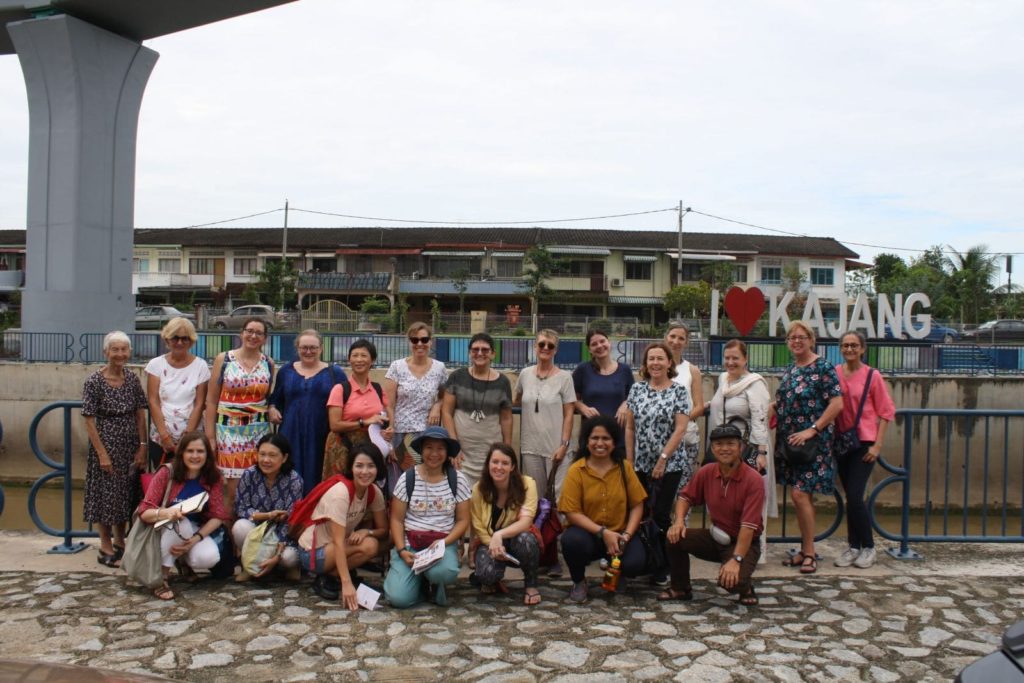Kajang Walking Tour @ 10 February 2020
by Josiane Reggane
Before starting our tour, we filled up on energy with a good cup of coffee, Teh tarik or hot lime juice with cookies in a Chinese kopitiam near the Kajang Heritage Center. After this snack, we were ready for a 2.5 hour visit to Kajang.
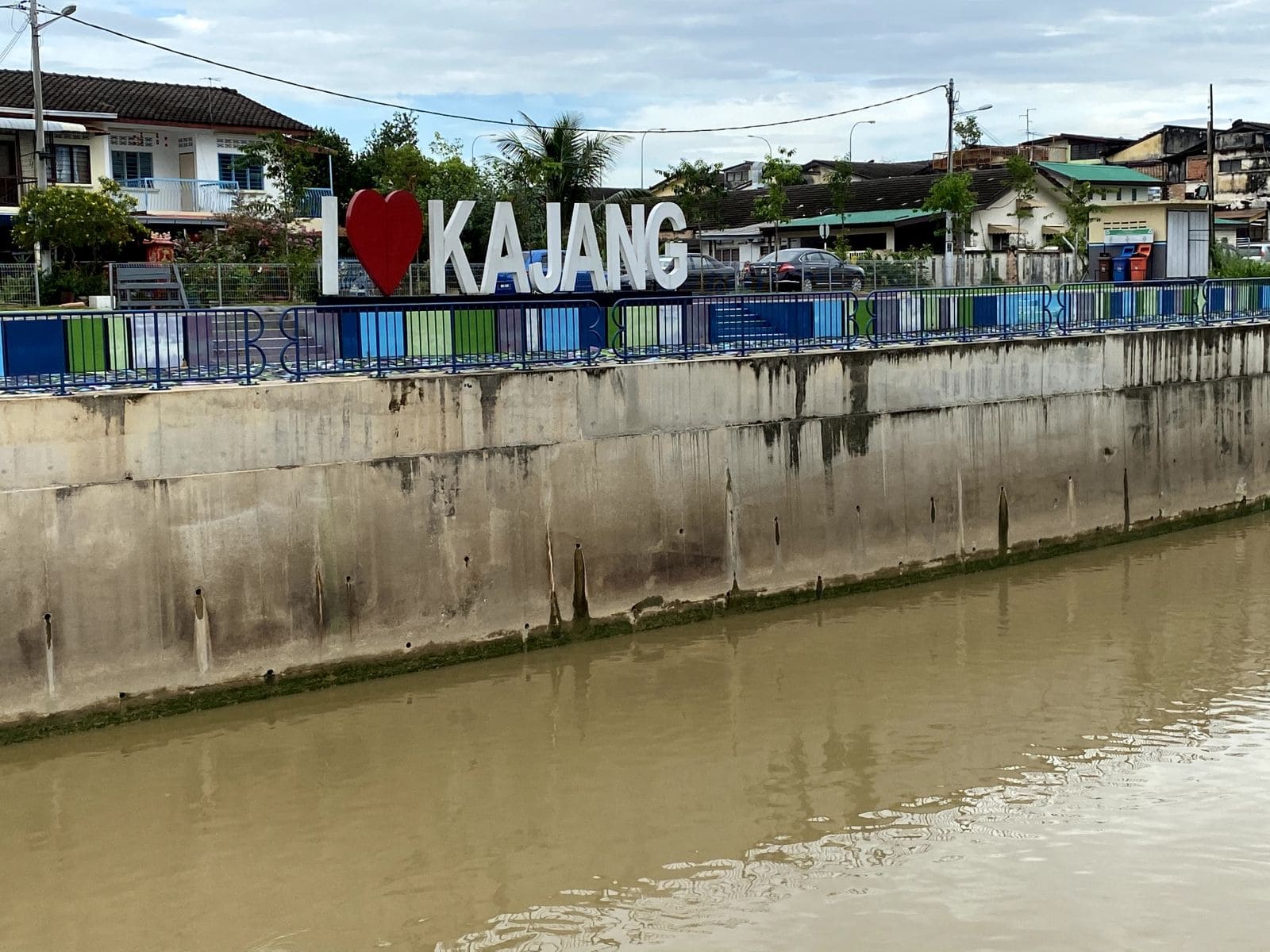
The tour started on the bank of the Langat River with an introduction to Kajang. The city is located about 22 km southeast of Kuala Lumpur in the Hulu Langat district, Selangor. It is adjacent to Semenyih district, Hulu Langat district and Ampang. Our guide began judiciously by emphasizing the important role that the river played in the creation of Kajang because it was essential for the transport of goods and people and also later for the development of tin extraction.
The history of Kajang dates back to the 1850s. The city was established concomitantly with the start of tin mining in the region. The 1884 census reported 60 inhabitants, mainly Sumatrans and Chinese. The road we were standing on was called Mandaling after the ethnic group of the first settlers from Indonesia. The Chinese population who came to work in the tin mines was mainly Hakka from Southern China.
In the 1890s, after a failure to plant coffee, the British turned to rubber plantations. The first to start this activity were the Kindersley brothers who became very successful.
The British imprint can be found in the brick shop houses which were built at the time and which can still be found in Kajang. The British also left their mark in the administrative organization of the city which they had divided into nine plots each bearing the name of their respective number. Records of the active presence of the British can also be found in the archives of the Selangor Journal which, in 1895, mentioned the creation of a cricket, football and leisure club.
Since the 1900s, Kajang has become a commercial and residential city for people wishing to escape the high property prices of Kuala Lumpur.
The name of the city of Kajang means nipah palm. The long leaves of this trunkless palm were used to weave large panels to build houses.
One of Kajang’s culinary specialties is satay. According to our guide, satay originated in China. Sa means three in Hokkien and Tay means pieces. But the satay that you can taste in Kajang is actually from Indonesia. It was brought here by the first settlers from Sumatra.
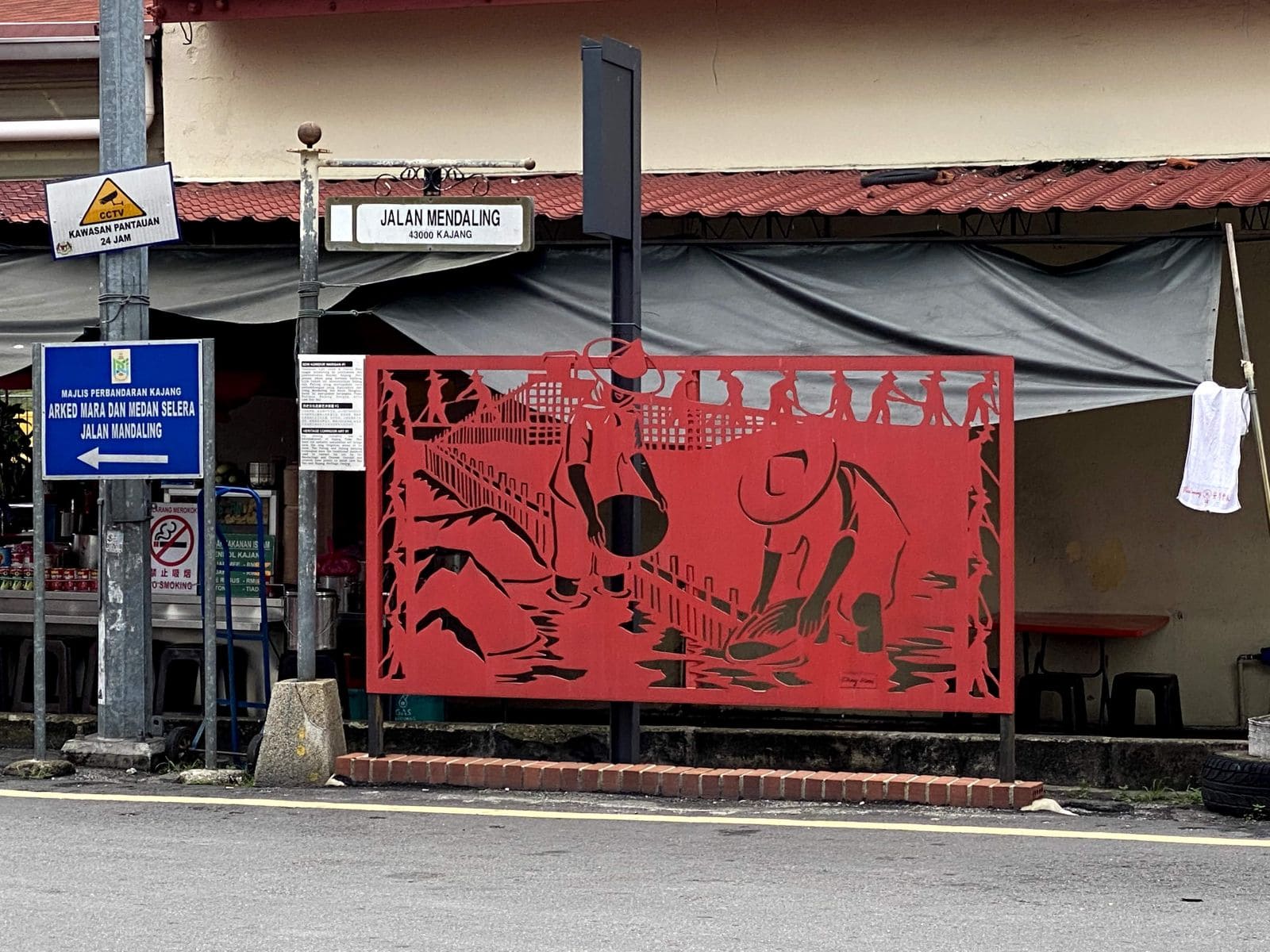
After this introduction, we started our tour of the old town. We first stopped to watch an art installation promoting Kajang heritage. A nice piece of red painted steel cut in the manner of a traditional Chinese paper-cut which depicts dulang washers panning for tin ore.
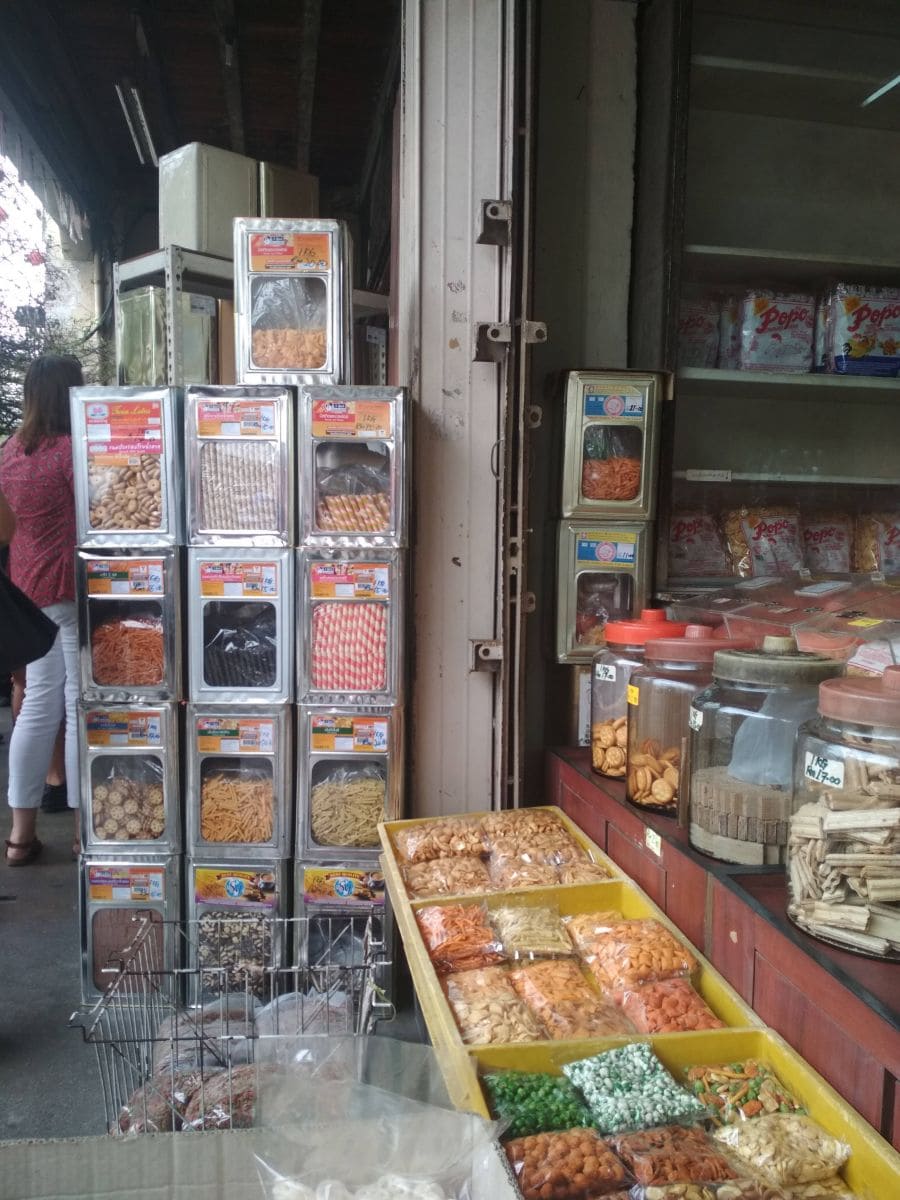
Before crossing the street and entering the five foot way - the very useful architectural invention of Mr. Stamford Raffles, as our guide reminded us - we took a look at the architecture of the old buildings. Several old houses with gable ends featuring one of the five elements: gold, earth, water, fire, wood are characteristics of southern Chinese architecture. Originally, these buildings were all covered with lime plaster, white or tinted with natural dye. Apart from the aesthetical aspect this process had the advantage to protect the bricks and insulate the houses. Unfortunately, this process is no longer used.
Walking five foot way, we passed by very old traditional shops like kedai biskut which offer a wide selection of cookies and sweets presented in large transparent glass jars and metal boxes with a transparent side to allow the customer to identify the type of cookie and appreciate their quality.
We also visited Kedai Ubat, the last traditional Chinese medicine store in Kajang. The shop owned by Mr Ng is a family business running this traditional Chinese medicine shop. It is full of boxes and plates of different sizes and shapes containing a mixture of powder or dry herbs. But the clutter is only apparent, the shop has a beautiful closet of 100 drawers which faces another closet with larger drawers, all labelled with Chinese characters. They contain all the ingredients and mysterious recipes of Traditional Chinese Medicine. We were informed that the medicines are repellents against insects and that certain medicines were traditionally sealed in wax to be protected. Nowadays, plastic boxes are used to protect these drugs.
Kedai biskut and kedai ubat still belong to the family of the founder and both are now managed by the third generation. These are not only shops but also places to live, where the children play, the aunts chat with their friends and family.
A fire razed the shop houses in 1903, they were rebuilt in 1917 in a neo classic style. Shop houses along Main Street were mixed with sundry-shops, medicine shops, textiles, goldsmith, pawnshop, mechanics, bicycle repair shops and many more.
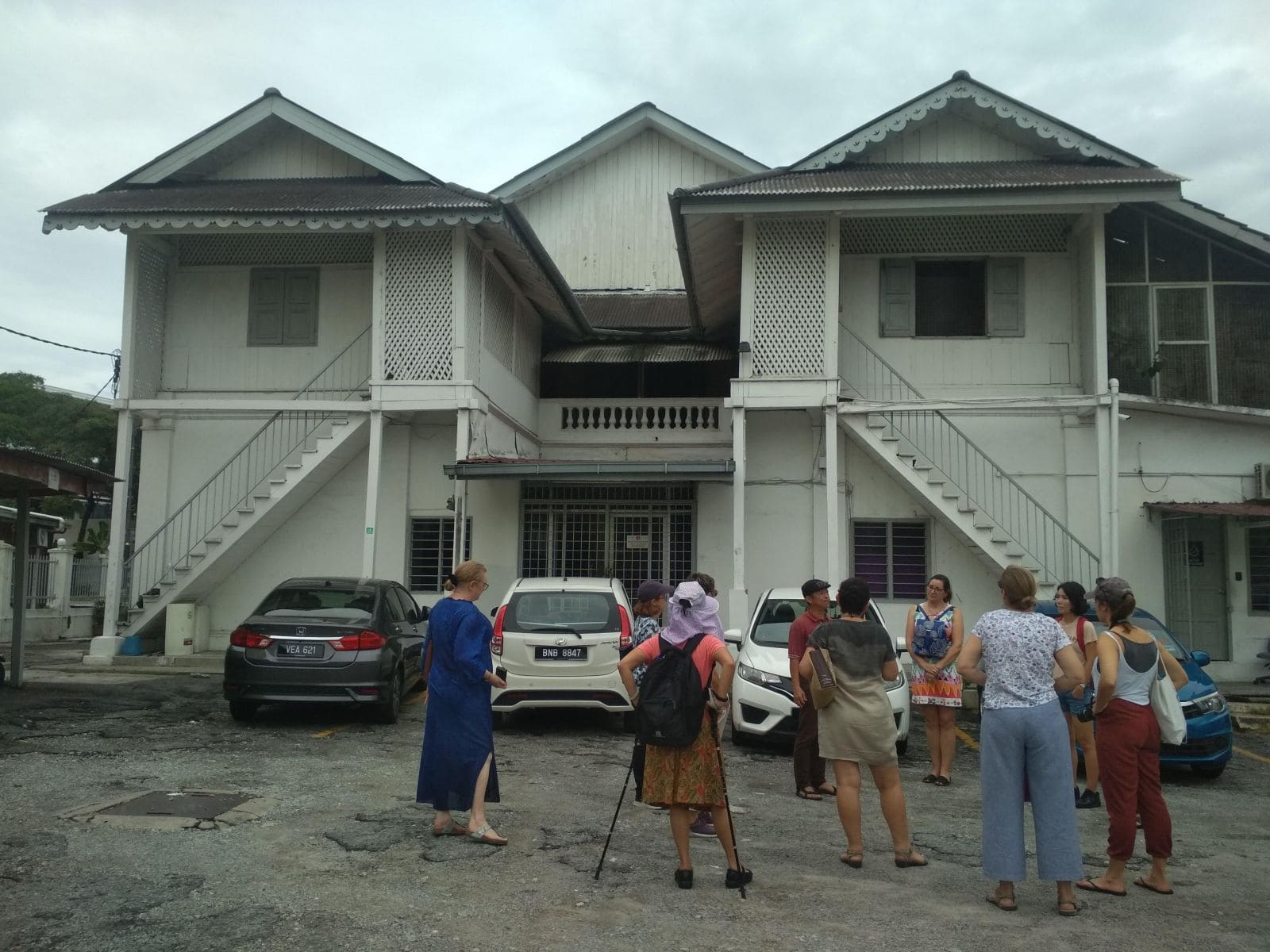
We visited the Post Office, a classic Malay house with an extended modern front located at the corner of Jalan Tengah and Jalan Semenuih. Lee Hock Ann who designed the old Pos Office at Jalan Panggung, KL in 1912 also designed the Kajang Pos Office two years later in 1914. The first floor that can be seen from the back of the building is a beautiful traditional timber Malay house.

The Shen Sze She Yar Temple built in 1898 is the oldest temple in Kajang. The main deity worshiped in this 122-year-old well maintained building is a local immortal. In 1860 a war broke out in the Sungai Ujong province of Negeri Sembilan between the Rajas due to the conflict over ownership of the tin mines. Kapitan Shen Ming Lee, a respected community leader, was defeated and had to retreat to the jungle where he was chased by his enemies. He was killed and beheaded. It has been said that the blood spurting from his dead body was white, and because the blood colour was white, he was deified as an immortal and honoured as Lord Shen Sze She Yar.
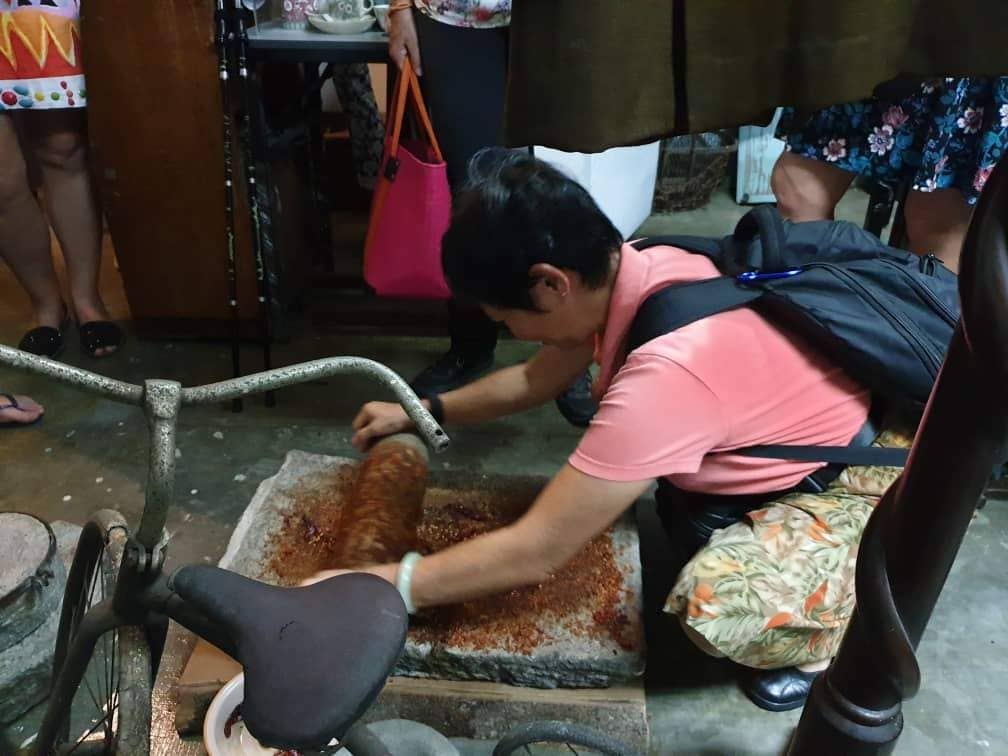
We ended our visit at the Kajang Heritage Centre which was established by the Federation of Chinese Associations Hulu Langat in 2000. Outside of the building stands a rubber compressing machine. This heavy machine (which required a crane to be transported to the Heritage Centre) was used to compress the rubber sheets to a thickness of 3 millimetres.
The small museum inside contains artefacts that were donated by locals. Our guide explained that the dulang was used to scoop up the river water mixed with mud. By swirling the water vigourously in the dulang the mud was washed away and the heavier tin ore remained in the bottom. He also showed us a rubber knife used to tap rubber. Rubber tapping is the process by which the latex is collected from a rubber tree. It involves making a thin, diagonal cut to remove a sliver of bark which cuts through the latex vessels, from which the product then flows. This was done in the plantation before dawn, before 5 am. The latex collected was put in rectangular plates and left to solidify. When solid enough it would go through the compressing machine several times to reduce the thickness. The last process will engrave lines on the rubber sheet to prevent sheets to stick to each other. The sheets will then hang to dry and smoked in the smoke house.
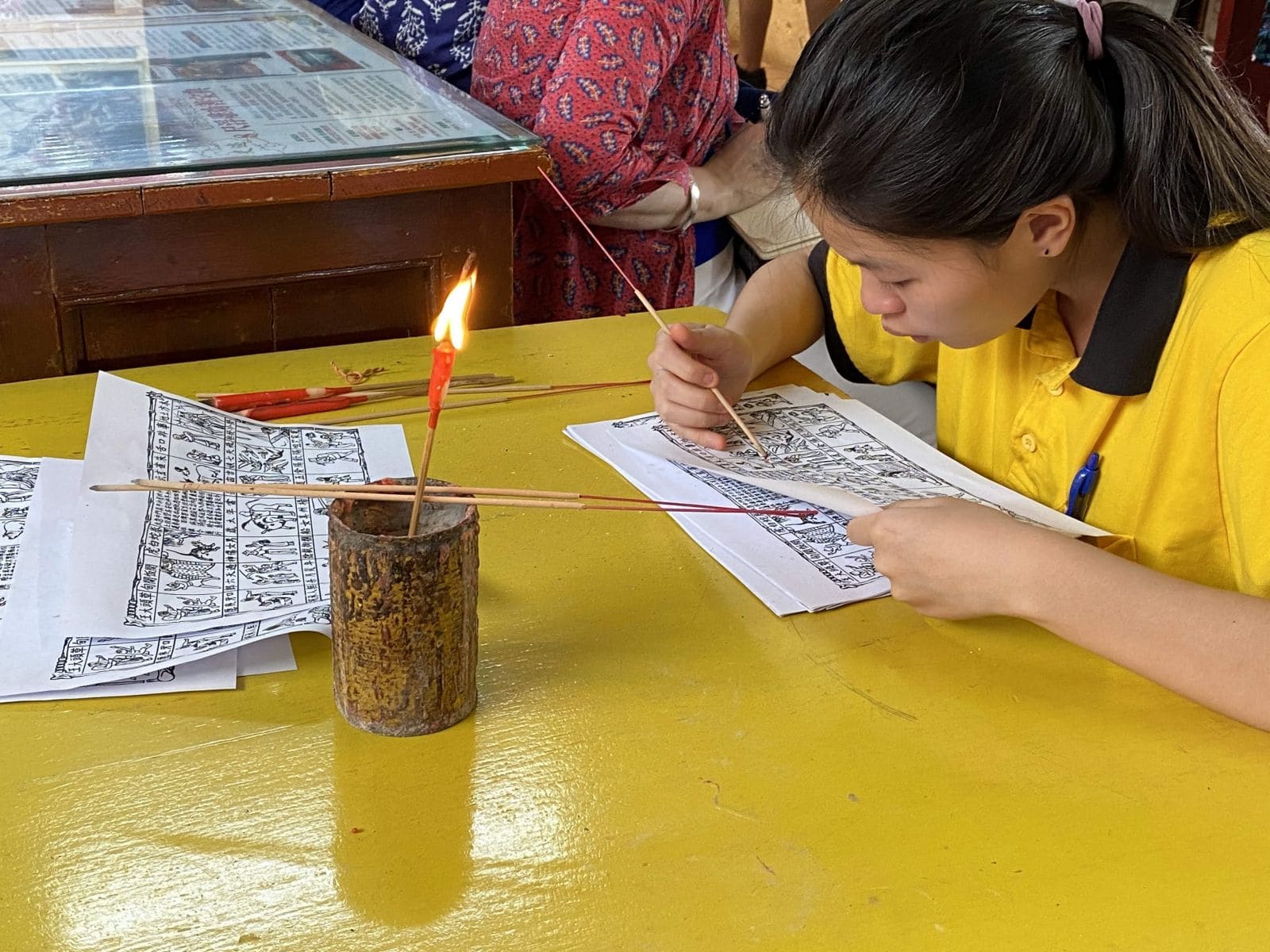
The last and maybe the most surprising item that our guide showed us was a carbide lamp. This simple lamp produces and burns acetylene (an inflammable gas) which is created by the reaction of calcium carbide when it comes in contact with water.
This tour in Kajang with our passionate and knowledgeable guide Mr Lee Kim Sin and his two colleagues was definitely an enlightening visit for all the explorers.
